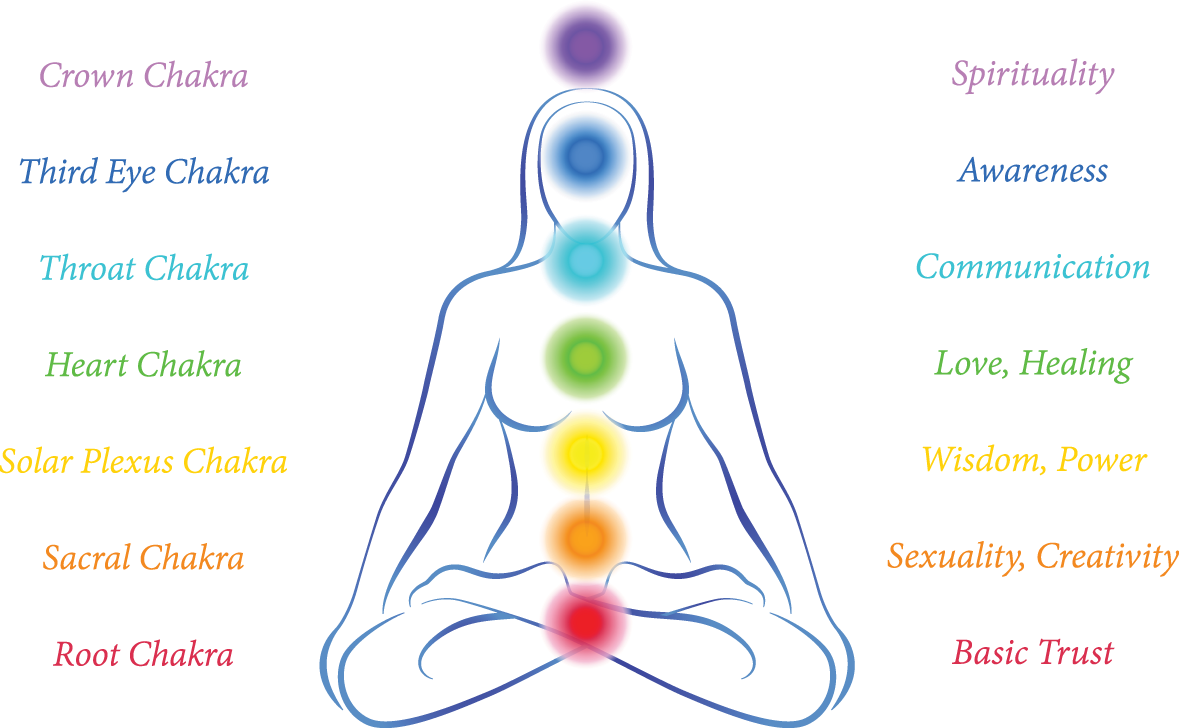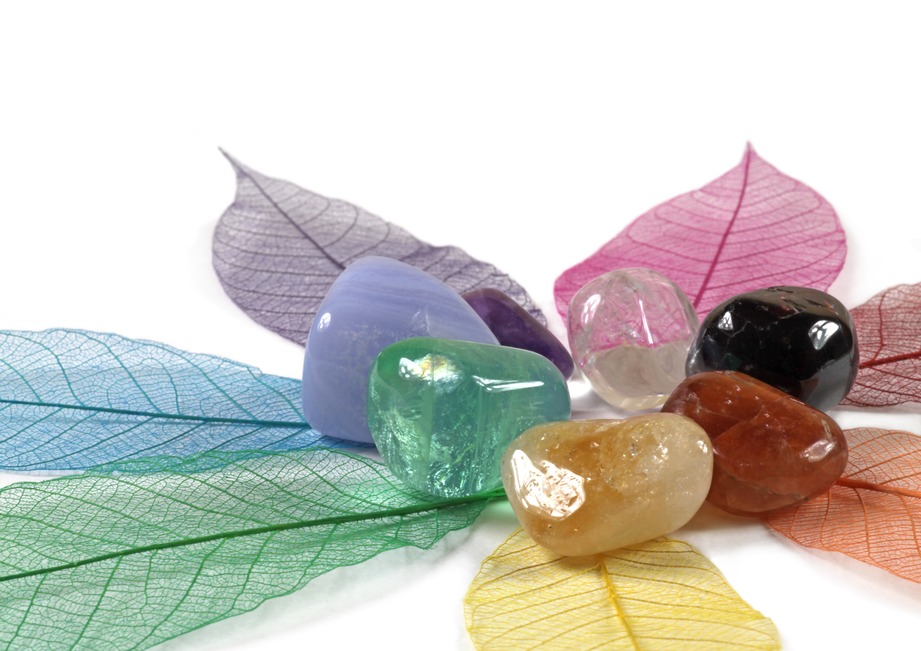What Are Chakras?
The word Chakra comes from the Sanskrit word that literally means ‘wheel’ or ‘disk’ and represents a point whereby the mind and body meet. There are seven major Chakras in the body and they are aligned in the centre of the body from the spine to the crown of the head. These turning wheels of energy open and close like a flower (often symbolized by a lotus flower) while they spin. These energy centers emit life force energy (prana) to every part of our being. They are intimately connected to each and every nerve and organ as well as psychological, emotional and spiritual centers of our being. For example, our thoughts and emotions affect our physical bodies and vice versa.
It is important for our Chakras to remain fluid and open. If there are blockages, and the energy cannot flow, the stagnant energy will display in our lives as illnesses, anxiety or depression.
The Seven Chakras

First Chakra
The Muladhara Chakra also known as the ‘root’ chakra. This is located perineum and associated with legs, feet, bones and large intestine and adrenal glands. The psychological function is that of survival. Our fight and flight is initiated from this chakra. So when this chakra is balanced and open we feel grounded, fearless and safe as the energy from this chakra allows us to harness courage, resourcefulness and the will to live during trying times.
Second Chakra
The Swadhisthana Chakra which means ‘sweetness’ is found in the Sacrum. This is our Chakra of creativity and is fuelled by passion. The parts of the body it is associated with is the womb, genitals, ovaries, testicles, kidneys bladder and lower back. It is also where your fertility originates. This chakra is responsible for our feeling, emotion, pleasure sensuality, intimacy and connection. Malfunction of this chakra can manifest as impotence, frigidity, uterine, bladder or kidney trouble and stiff lower back.
Third Chakra
The Manipura Chakra which means ‘lustrous gem’, is found in the solar plexus and associated with the pancreas and adrenal glands, digestive system, liver and gall bladder. This is the center of willpower and about the perception of who you are. This chakra is the center of our self esteem, our willpower, self-discipline, as well as warmth in our personality. Digestive issues, chronic fatigue and hypertension can result if this chakra malfunctions.
Fourth Chakra
The Anahata Chakra which means ‘unstruck’ is your ‘heart’ chakra. This chakra moves love through your life. This is your healing center. Most spiritual traditions recognize love as the ultimate healing force. When this chakra is out of balance, it is said to cause the greatest damage. Imbalances within the heart can throw the entire system off balance. This chakra allows us to recognize our true essence as loving beings to inspire kindness and compassion to ourselves and other. It allows us to recognize and get in touch with the scared and fundamental truth that runs through all of life. Imbalance in the heart chakra may manifest in the body as asthma, coronary disease, circulation issues and lung disease.
Fifth Chakra
The Visuddha which means purification is also known as the ‘throat’ chakra. This is one of the first higher or spiritual chakras. It is linked to the thyroid, parathyroid, neck, should, arms and hands. This chakra contributes to our ability to express our selves verbally or non verbally, through sound and vibration. It is our ability to speak our truth and speak out. In order to reach and open the fifth chakra, the body must attain a certain level of purification. To enter this chakra is to begin to perceive the subtle vibrational messages from the etheric field. Doubt and negative thinking is the main set back for this chakra. Malfunction in this chakra may appear as sore throats, stiff neck, colds, thyroid problems and hearing problems.
Sixth Chakra
The Ajna or third eye chakra is located in the center of the forehead, slightly above eye level. It is located in the brain and associated to the pineal gland and eyes. The energy of this chakra gives us the gift of seeing both inner and outer worlds. It allows us clarity in our thoughts and spiritual contemplation. The third eye sees beyond the physical world, bringing us added insight, just as reading between the lines of written material brings us deeper understanding. It promotes our ability of creative visualization and increase in intuition. Some physical symptoms or effects of a closed or unbalanced third eye may include insomnia, headaches, nightmares, eyestrain and blurred vision.
Seventh Chakra
The Sahasrara or crown chakra is located on the top of the head. It influences the Pituitary gland, the cerebral cortex and central nervous system. This Chakra is the foundation of our spiritual body and links us to the highest guidance, the creation. When the crown chakra is balanced, it helps us to let go of ego driven desires and trust in our highest guidance. In Yoga, this chakra is deemed to be the seat of enlightenment. The ultimate state of consciousness that is beyond reason, beyond the senses and beyond the limitations of the world around us. Meditation or mental stillness is necessary to get to this ultimate state of consciousness. In the physical aspect, imbalance in this chakra can be seen as depression, alienation, confusion, boredom, apathy, inability to learn. Balance in this chakra is affected by the balance of the the previous six chakras.

